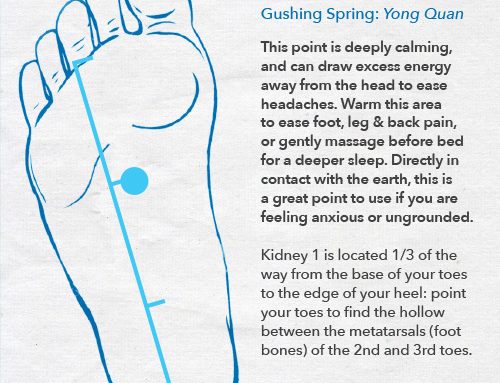Don’t get me wrong: regular movement is one of the foundations of good health, and Qi Gong (a gentle exercise that links movement with breath) is an important part of the Chinese Medicine tool kit. More intensive forms of exercise can also be positive for healthy, robust individuals, but as with everything in life, there needs to be a balance between Yin (rest) and Yang (exertion).
Running our lives purely in Yang mode – stressful / long work hours, hectic life schedules, insufficient / sub-optimal sleep, rushed / less-than-nourishing meals, constant stimulation and screen-time – doesn’t allow time to rest and replenish our energies, and can leave some individuals running on empty. For these people, an intensive exercise regime can further deplete dwindling energy reserves and be detrimental to health; ultimately, it can lead to high blood pressure, high cholesterol, weight gain, fatigue, anxiety, depression, digestive disorders, imbalanced hormones and compromised mental clarity (amongst many other health issues). These burnt-out individuals need more Yin-time – time to allow the body to rest, digest and rebuild. Unfortunately, our ever-accelerating society doesn’t really prize “unproductive” time, so taking time out to slow down and just be can seem like a guilty, lazy or uncomfortable choice. Instead, we may reach for a coffee, “energy” drink or sugary treat to keep ourselves running around like an Energizer bunny.
So what stops us from getting into Yin mode more often?
One hurdle is that running in Yang mode can feel great! (In fact, it can feel so great that some people become addicted to it). When we are stressed, busy or hyper-stimulated, our bodies are governed by the Sympathetic Nervous System (SNS). This is also referred to as “fight or flight” mode, and is invaluable for getting us out of dangerous situations. When the SNS is dominant, adrenaline pumps through our veins, sharpening our senses and priming our lungs, heart and muscles for escape. We feel energized, alert and alive. This is very helpful for running away from a dangerous situation, or making a split-second judgment in avoiding an accident – but it comes at a cost. While the body’s energies are diverted towards immediate survival, all those bodily functions that are deemed non-essential in the short term – digestion and assimilation of food, cellular repair and growth, processing of toxins and breakdown of fat – are turned down, and will not be turned back up again until we switch back to Parasympathetic Nervous System (PNS) dominance, or “rest and digest” mode.
By contrast, PNS mode doesn’t have the switched-on, wired, invincible “buzziness” of SNS mode. To someone used to running on adrenaline, PNS mode can feel sluggish, lethargic and “off”. But the body is wise: it wants to keep us inactive while all of that critical repair and growth is going on, so it doesn’t release any of that buzzy adrenaline that prompts us to move around and get active. PNS mode is the necessary balance to SNS mode: it is a chance to refuel, replenish and repair any damage incurred while running on stress hormones (adrenaline and cortisol). And once we get used to allowing ourselves to slow down and relax into this healing mode, it can feel great too: calm, centred, clear and balanced.

As always in Chinese Medicine, we look for balance between two opposing qualities. Both the Sympathetic and Parasympathetic modes are essential to our survival: neither is “better” than the other, and the idea is to achieve balance between the two, rather than allowing one to dominate.
To get a better idea of how each mode can impact mind and body, let’s compare the effects of the two systems:
mobile users: scroll / swipe across table
| SNS / Sympathetic Nervous System | PNS / Parasympathetic Nervous System |
|---|---|
| “fight or flight”, Yang mode | “rest and digest”, Yin mode |
| elevated heart rate & blood pressure | decreased heart rate & blood pressure |
| shallow, short breaths | deep, slow breaths |
| liver converts glycogen stores to glucose (which is fast & easy-burning; over time, this can lead to insulin resistance, sugar cravings & pre-diabetes) |
liver releases bile, allowing for fat breakdown (fat is slow-burning, providing sustained energy release & stabilising blood sugar levels) |
| increased blood-flow to skeletal muscles | increased blood-flow to digestive organs |
| inhibited secretion of stomach acid (when prolonged, can lead to incomplete digestion & malabsorption of nutrients) |
supports reproductive health, fertility & sexual arousal |
| muscle is broken down for energy (catabolism) |
new muscle growth (anabolism) & muscle repair |
| releases adrenaline and cortisol | production of growth hormones, DHEA & sex hormones |
mobile users: scroll / swipe across table
Our bodies are not designed to run in SNS mode for long periods of time: the energizing effects of adrenaline on the body are intended only for the short-term, to allow escape from danger. Unfortunately, modern life provides many other triggers that can keep us adrenalized and in a perpetual state of perceived danger:
- work stress
- hectic schedules
- deadlines
- late nights (the PNS is most active between 10pm and 2am)
- skipped meals (the body perceives low blood sugar as a stressor and releases adrenaline)
- coffee, chocolate, “energy” drinks, sugar
- multi-tasking
- constant stimulation with emails, TV, messages, phone calls, etc.
- loud noises, dramatic news stories, arguments, even scary movies / books
- life drama, draining relationships
So what’s the problem with spending lots of time in fight or flight mode?
While running predominantly on adrenaline may not be harmful in the short-term, in the longer-term, SNS dominance can lead to the development of a diverse range of serious health problems like elevated blood pressure & cholesterol, insulin-resistance & pre-diabetes, digestive disorders (such as Irritable Bowel Syndrome, cramping, bloating, food sensitivities), weight gain or inability to lose weight. It is at this point that exercising intensively – prolonging SNS dominance – can do more harm than good.
And the bad news doesn’t stop here: further health issues can arise if the imbalance is not addressed: for example, dysregulation of sex hormones can lead to menstrual irregularities, subfertility and decreased sex drive. To give another example, chronic poor digestion can lead to irritation and inflammation of the intestinal mucosa, resulting in “leaky gut”: this is a condition where the intestinal wall loses it’s integrity and becomes permeable, permitting products from the digestive tract to directly enter the bloodstream and circulate around the body. This situation can lead to a diverse range of autoimmune and mood disorders, such as rheumatoid arthritis, thyroid issues and depression.
Sounds like getting more time in Yin-mode is the way to go –
how can I switch over to PNS dominance?
It’s not a coincidence that much of Chinese Medicine lifestyle advice is geared towards achieving a healthy balance between the two nervous systems! These pearls of wisdom have stood the test of time, and include habits such as:
- avoid multi-tasking when eating: trying to work (or being distracted by screens or information overload) while eating diverts the necessary energy away from the digestive organs. I always remind my patients of this, and encourage them to take a few minutes before eating for some restorative, deep-belly breaths: this signals the body that it is ok to drop into “rest and digest” mode, and focus on digesting and assimilating nutrients.
- fall asleep before 10pm: we now know that the PNS is most active between 10pm and 2am, when it gets to work on cleaning up the stress damage incurred throughout the day. Falling asleep before this time allows to body to focus on repair and renewal.
- acupuncture: this is a powerful treatment for rebalancing the nervous system. Repeated studies have shown that acupuncture can promote relaxation and reduce stress, allowing us to drop into the healing zone of the PNS.
- deep breathing, particularly when linked with movement: slow, breath-focused exercise is a great way to let the body know it can switch off the alarm bells; as an added bonus, moving slowly with the breath increases awareness of your mind and body, bringing you into the present moment – and into your present experience. Yoga, slow swimming or walking, Tai Qi and Qi Gong are great ways to get some gentle exercise into your day.
Triangles are your friend!
Ok – bear with me here! Shallow, rapid breaths are a message to the body that it should be prepared for fight or flight. They can perpetuate adrenaline release and keep us in SNS mode, even once stress or danger has passed. Conversely, breathing slowly, deeply and mindfully encourages the body to feel safe, allowing it to switch to PNS mode. A particularly effective way of signalling safety to the nervous system is by extending the length of your exhalation (in a dangerous situation, you wouldn’t have time to leisurely and completely empty your lungs!). A wonderfully simple Pranayama* exercise uses the concept of a triangle to regulate your in- and out-breaths.
1. Sit or lay comfortably (preferably with a straight spine)
2. Take a few moments to allow your breath to settle into its natural rhythm, and note how long each inhale and exhale lasts (for most people this is somewhere between 3 and 6 counts)
3. The idea now is to lengthen the exhale so it is twice as long as your inhale. So, using our triangle friend, we inhale for the length of one side (for example, a count of 3), and then exhale for the length of the two remaining sides (3 + 3), drawing the exhale out nice and long. Keep the breathing gentle – don’t force the breath, and if you find you are running out of exhale, try shortening the count. As your body relaxes, you may find that your inhales and exhales get naturally slower.

4. Once you return to the beginning point on the triangle, start again. Aim for a few minutes of triangle breathing as a daily practice, or whenever you are feeling the need to reduce stress.
So, is it possible to be exercising too much?
Now that we’ve discussed the effects on the body of the two arms of the nervous system – as well as the activities that nudge us into one mode or the other – it is hopefully a bit clearer how heavy exercise (which activates our stress hormones) can be detrimental for individuals who have already spent too long in SNS mode, or those who are exhausting their stress hormone storehouses (as in adrenal exhaustion).
As always in Chinese Medicine, every individual is unique and will benefit from customised treatment and lifestyle tweaks. So if you think this may be you – if your exercise routine is leaving you feeling exhausted, cranky, unfocused, depressed or is not shifting the weight like it used to – have a chat with your Chinese Medicine practitioner about how Chinese Medicine can help you feel more balanced and energetic.
* Pranayama is one of the 8 “limbs” of Yoga (yoga postures, or Asana, form another of the limbs). It is the practice of guiding the breath so as the improve health, and balance the mind and body.






Great posting friend. Will be back to read more.